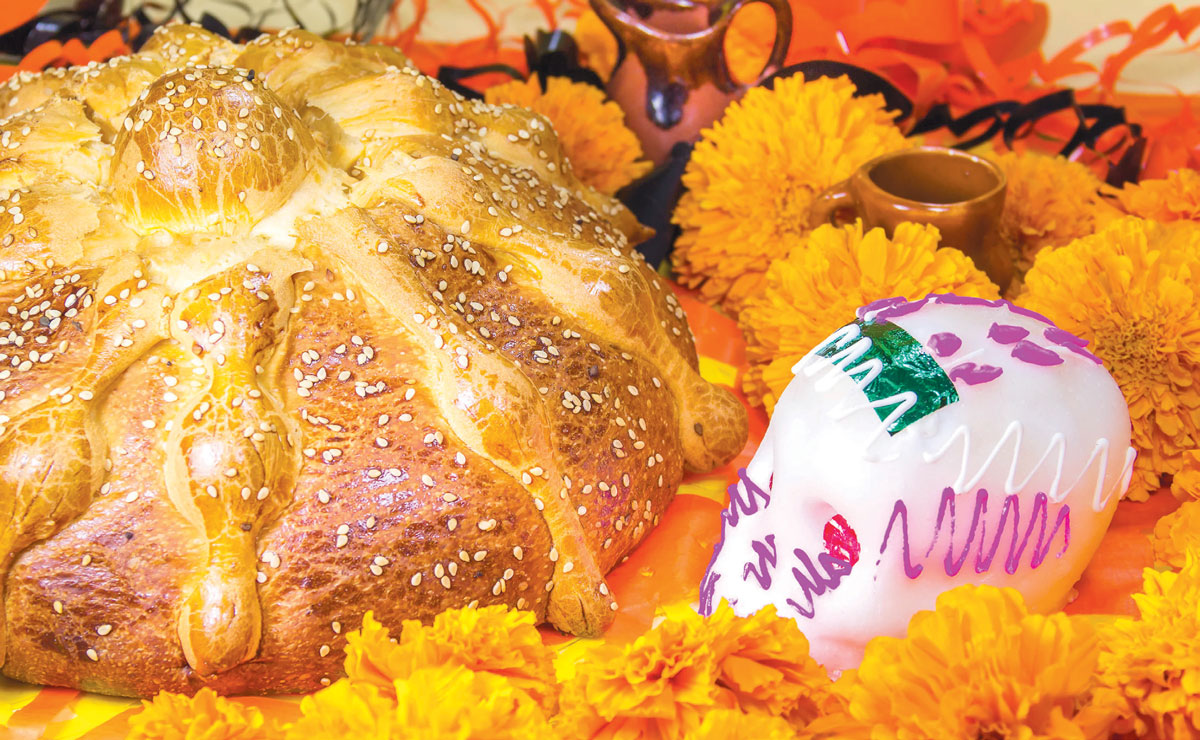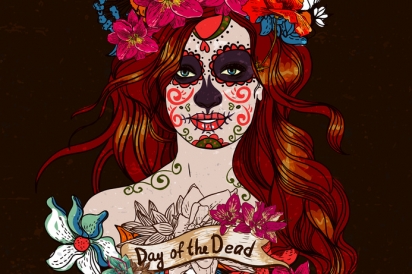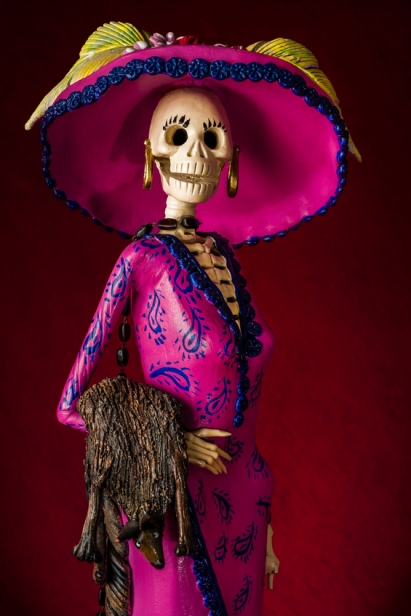Food Traditions Add Flavor to Día de Muertos
AT midnight on the first of November, a feast begins to celebrate the spirits of the dead, who are believed to return for a day: Día de Muertos.
“It’s the one holiday where you don’t have to give gifts, you don’t have to dress up. In fact, quite the opposite—you can wear a costume,” says Ana Beaven, a Mexico City native and co-owner of Cuchara Restaurant, which she opened to provide a cultural experience beyond the authentic cuisine.
Building altars, or ofrendas, to pay tribute to the dead is central to the festivities. Altars can be simple or incredibly ornate and are decorated with photos, banners of colorful laser-cut tissue paper called papel picado, beloved food and drink and armfuls of cempasuchil, or Mexican marigolds. Traced back to the Aztecs who incorporated many flowers into their diet, the bright yellow and sometimes white or purple flora is in peak during the holiday. Cempasuchil also provides a pleasant bitterness and floral notes to baked goods, cocktails and other dishes.
“When you smell that flower, you know it’s Día de Muertos,” says Karla Espinosa, a Houston-area pastry chef. She returns each year to her hometown in Veracruz to celebrate her favorite holiday. “Everybody can make an altar,” says Espinosa. “My grandma, she puts cigars because my uncle loved to smoke cigars. She puts Coke, because my uncle loved to drink Coke. She chops raw onion because he loved raw onion. We all believe that on November 1st at midnight or during the night, our loved ones who are already dead, they come and have a feast.”
Sugar skulls are a recognizable icon of Día de Muertos that adorn altars or are given as gifts, but they aren’t intended to be eaten. “Every child eats them and we didn’t die because God exists,” says Beaven, laughing, “but they’re made with glue and sugar.” Instead, pan de muerto is the most traditional food, enjoyed only during Día de Muertos, often dipped into hot chocolate. The round loaves of sweet bread are flavored with agua de azahar (orange blossom water), decorated with twists to represent bones and sprinkled with sesame seeds or coarse sugar.
An amalgamation of ancient Aztec festival and the Catholic holiday All Saints Day, Día de Muertos has roots in Central and Southern Mexico. In Guatemala, Mayan influence has resulted in a spectacular event that attracts thousands of international visitors each year to the Highlands. Feria del Barrilete Gigante, or the Giant Kite Festival, is just as it sounds: Residents in Sumpango and Santiago Sacatepéquez spend months designing and constructing expansive circular kites of bamboo and tissue paper that boast intricate religious, regional or personal scenes and average 10 feet in diameter but can be much larger. On November 2, the kites are flown with ropes above the cemeteries to provide a clear line for the deceased to communicate with living relatives waiting below.
Lilian Vega and husband, Fernando Guirola, of Houston-based Macaw Confections, take the four-hour flight home to Guatemala City to join family members in visiting the cemetery to decorate loved ones’ grave sites, bring offerings and spend time together. “It looks like a beautiful garden that day,” says Vega, eyes lit up. “Everything is full of flowers.”
In Guatemala the family feasts brought to the cemetery as offerings have resulted in an iconic dish called fiambre, now the official foodstuff of Día de Muertos, which is even referred to as Día de Fiambre. Taking days to prepare, it is a composed salad of often more than 50 ingredients, from cured meats and cheeses to cooked and fresh vegetables, all marinated in a flavorful sauce.
“Every family has their own recipe with a unique twist,” says Guirola. Vega adds: “Yes, and for instance, each family will have 10 different varieties of hams, 10 different varieties of sausages, and it’s all on one plate.”
There are different versions of the dish, but the most popular is fiambre rojo, which includes red beetroot. Served alongside the savory dish are two classic Latin American beverages: coffee and drinking chocolate. Desserts are also plentiful, from camote (a sugar- and cinnamon-laced sweet potato puree) to rellenito (mashed plantains that are stuffed with a sweetened black bean filling and fried). Traditional candies are also numerous.
To experience an authentic Día de Muertos celebration in Houston, look to Cuchara.
“Last year we did a candlelight dinner, which is what we’re going to do again because it was super cool,” says Beaven. She plans to focus the menu on The Seven Moles of Oaxaca, paired with a mezcal tasting. There will be a costume party on the patio and life-size papier mâché Catrinas—the well-dressed female skeleton character—from a local piñata artist to seat around the restaurant.
Be sure to pick up an individual loaf of housemade pan de muerto and perhaps even a miniature ofrenda to acknowledge your own favorite relatives past.








